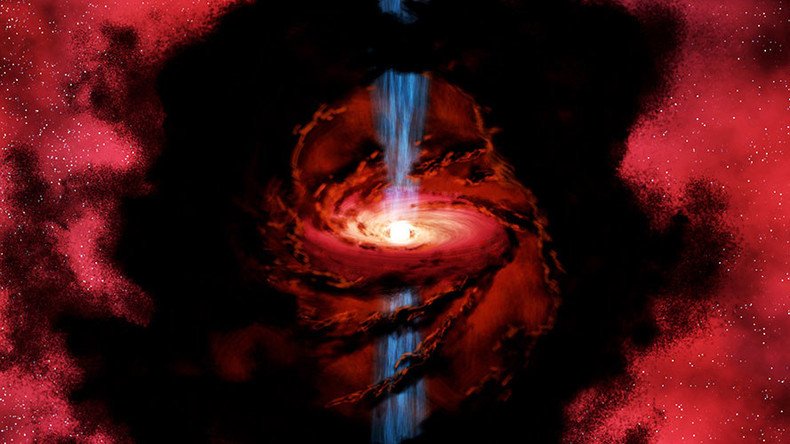Newborn star survives on ‘space dust hamburger’ – study (VIDEO)

What does a newborn star need to survive the early stages of life in the universe? A hamburger made of gas and space dust, according to new research.
A team of international scientists have come together to study a distant protostar, and a disk surrounding the young star, for the first time.
In this issue: Plastic accumulating in Arctic seas, first clear image of a dusty disk feeding a young star and more https://t.co/ynIvILfp22pic.twitter.com/ngAMWB5YRV
— Science Advances (@ScienceAdvances) April 19, 2017
Using images captured by the $1.4 billion ALMA radio telescope in northern Chile, researchers noticed a dark line through two brightly-colored sides of the disk. This split created a triple-layer shape reminiscent of a hamburger, the study said. The phenomenon, known as an accretion disk, is thought to act as a food source for the star.
Researcher at Taiwan's National Institute of Astronomy and Astrophysics, and lead author of the study, Chin-Fei Lee, said in a statement: “It is so amazing to see such a detailed structure of a very young accretion disk. For many years, astronomers have been searching for accretion disks in the earliest phase of star formation, to determine their structure, how they are formed, and how the accretion process takes place."
READ MORE: Earth from a billion miles away: Cassini captures mind-blowing image (PHOTO)
The first detailed images of the phenomenon also show that the disk is rotating, thus collecting iron, silicate – a silicon compound – and other interstellar matter that feed the star.
Named IRAS 1573-0104, the star is just 40,000 years old and is thought to be up to a third of the size of our own sun. Found in the system of Orion, it is 1,300 light years from Earth.
The study, published in the journal Science Advances, hopes to further our understanding of the formation of stars and planets, as well as aid in our search for alien life in the universe.












